Happy Tuesday! Yesterday, Apple became the first company in the world to reach a market cap of $3 trillion. If you encourage five friends to become members of The Dispatch, we could become the second.
Quick Hits: Today’s Top Stories
-
The Food and Drug Administration amended the Pfizer/BioNTech COVID-19 vaccine’s emergency use authorization Monday to both allow children ages 12 through 15 to receive a booster dose and shorten the required length between second and third doses from six months to five.
-
A Centers for Disease Control Study published over the weekend found that—of 272 children ages 12 to 17 hospitalized for COVID-19 at six children’s hospitals in July and August 2021—just 0.4 percent were fully vaccinated, while about 3 in 5 were obese.
-
Rep. Bobby Rush of Illinois, 75, became the latest House Democrat to announce his or her retirement ahead of the 2022 midterms, telling The Chicago Sun-Times he doesn’t want his grandchildren to only know him “from a television news clip or something they read in a newspaper.”
-
A California jury Monday found Elizabeth Holmes—founder and former CEO of the blood-testing startup Theranos—guilty on three counts of wire fraud and one count of conspiracy to commit wire fraud for misleading investors and the general public about the company’s alleged blood testing technology. She was acquitted on four charges and the jury could not reach a verdict on three other charges.
Omicron Puts Democratic K-12 In-Person Learning Advocates to the Test
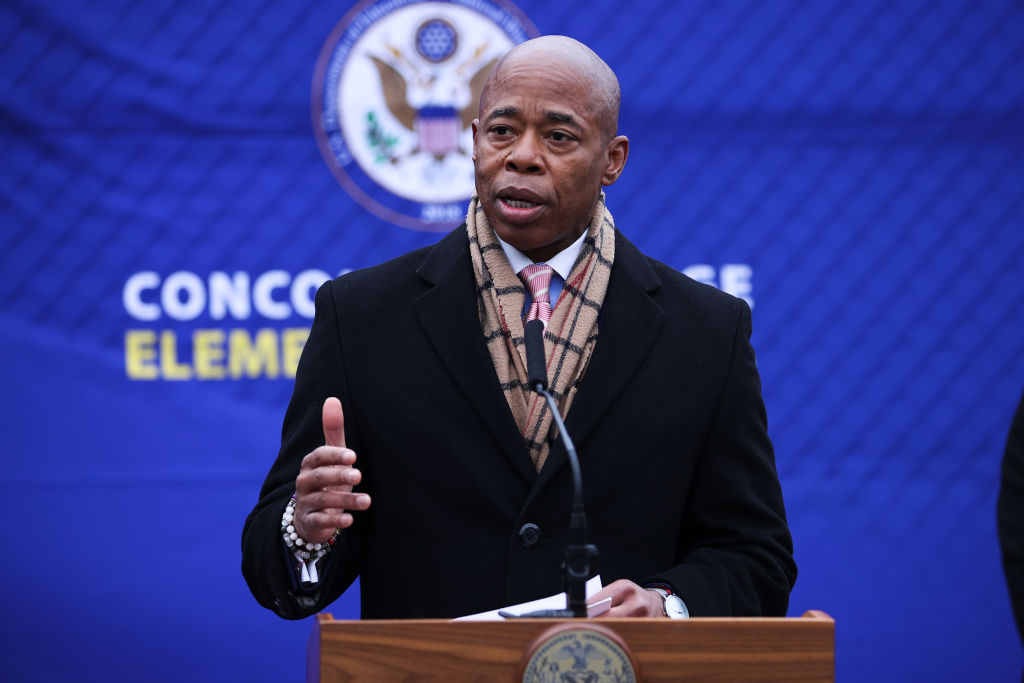
As winter break came to an end this weekend for millions of students across the country, the Biden administration remained steadfast in its belief that the Omicron-driven spike in COVID-19 cases should not lead to the return of virtual instruction. “Our expectation is for schools to be open full-time for students, for in-person learning,” Education Secretary Miguel Cardona said on Fox News Sunday. “We remember the impact of school closures on students last year. And our science is better. We have better tools. We have $10 billion in the American Rescue Plan for surveillance testing. Vaccinations are available now for children ages 5 and up.”
Cardona wasn’t improvising. In recent weeks, a series of top administration officials—from Dr. Anthony Fauci, to CDC Director Dr. Rochelle Walensky, to President Joe Biden himself—have made the case that the early days of 2022 bear little resemblance to a year ago, when they believed many school districts lacked the tools and resources to safely keep their doors open. Campaigning for office in the summer of 2020, Biden said, “Everyone wants our schools to reopen,” but argued the Trump administration hadn’t prepared well enough to do so safely.
“I got Congress to pass billions of dollars in school improvements, ventilation, and social distancing. Schools should be safer than ever from COVID-19,” he told reporters last month. “Now, if a student tests positive, other students can take the test and stay in the classroom if they’re not infected rather than closing the whole school or having to quarantine. We can keep our K through 12 schools open, and that’s exactly what we should be doing.”
Coupled with masking and vaccination for all who are eligible, the Biden administration believes this “test-to-stay” (TTS) protocol—introduced by the CDC a few weeks ago—will allow school districts to mitigate the spread of the virus and weather Omicron storm. “At this point, we have a lot of evidence supporting test-to-stay as a safe alternative to quarantine,” Emily Oster—a Brown University economist who has become a leading voice on safely reopening schools—told The Dispatch. “It may be hard for some districts to implement, [but] many have done so successfully, so it’s clearly possible—if tests are available.”
However, tests aren’t really available—and plenty of school districts have struggled to procure enough to implement TTS. But Democratic municipal leaders in some of the country’s biggest cities are forging ahead with in-person learning anyway. “The safest place for children is inside a school,” newly sworn-in New York City Mayor Eric Adams said this weekend. “The numbers of transmissions are low, your children [are] in a safe space to learn and continue to thrive. We’ve lost almost two years of education. … We can’t do it again.”
Chicago Mayor Lori Lightfoot told CNBC yesterday the science has made it “fundamentally” clear that in-person learning is safe. “Our schools are not the source of significant spread,” she said. “The issue is community spread. But we need to keep our kids in schools, which is what we’re going to do in Chicago.”
But not every city has followed their lead. Detroit Public Schools canceled both in-person and virtual learning Monday, Tuesday, and Wednesday of this week because the city’s COVID-19 infection rate is at an all-time high. Atlanta Public Schools originally planned to continue with in-person instruction as normal, but let parents know on Saturday they would go virtual this week due to “the rapid rise in positive cases in the metro Atlanta area.” On Sunday night, Milwaukee Public Schools announced it would do the same because of “an influx of reported positive COVID-19 cases among district staff.” Atlanta and Milwaukee’s school districts said their “goal” is to return to school next Monday.
Behind many of these districts’ about-faces was days of public and private pressure from teachers unions. Cleveland Teachers Union President Shari Obrenski said her city’s decision to close schools for in-person learning this week was the “best course of action given the number of cases we have in the community right now.” Roughly 24 hours before Milwaukee schools announced their switch, the Milwaukee Teachers’ Education Association posted on Facebook it had “advocated” that MPS return to virtual learning due to high “case burden numbers.” A member of New York’s United Federation of Teachers filed a lawsuit seeking a temporary restraining order on Adams’ decision to continue with in-person learning. Chicago’s teachers union directed its members to report to work yesterday morning, but the organization is set to vote later today on a walkout that could begin as early as Wednesday.
Many cities and school districts—including Milwaukee—have mandated vaccines for teachers and staff, so the risk of severe illness is quite low for the vast majority of faculty members, as it is for the vast majority of students. But due to mandatory quarantine periods, rising case numbers present alternative challenges.
“The last couple of weeks prior to the break was very difficult in our classrooms,” Obrenski said. “We were seeing rising cases among students and staff to a degree where in a number of schools, we simply did not have enough staff in order to adequately man all of the classrooms.”
“The primary current issues surrounding school closures seem to be staffing related,” Oster said. “A related issue is the fact that, even if the [Omicron] variant is less severe, the large number of cases may lead to hospital overcrowding. This issue is complicated, though, since closing schools will further limit the available hospital staff, since many are parents. So the direction of this effect isn’t obvious.”
This clash between Democratic elected officials and teachers unions—one of the party’s most reliable constituencies— did not exist earlier in the pandemic. Lightfoot on Monday went so far as to dismiss concerns about Chicago’s plans as “saber-rattling by teachers union leadership.” Evolving science—and approaching midterm elections—has rendered in-person learning a top priority.
Conventional political wisdom settled rather quickly around the idea that yearlong school closures in Virginia had more than a little to do with Republican Gov-elect Glenn Youngkin’s victory over Democratic former Gov. Terry McAuliffe. A December Manhattan Institute report backed that intuition up with data, finding “school closures were associated with significant movement toward the Republican candidate.”
“In districts with local public schools open for less than a full month of in-person learning,” the report read, “Youngkin outperformed Trump by nearly 2 [extra] percentage points.”
But political considerations should obviously be secondary to the well-being of students—and study after study has shown remote learning to have real costs for the children subjected to it.
“Research from the science of learning tells us that children learn best when they can be active and engaged in learning that is meaningful, socially interactive, iterative, and joyful. Those qualities are difficult—in some cases impossible—to create in remote learning environments,” Helen Shwe Hadani, an expert in early childhood and creativity development, told The Dispatch. “Children need and crave the social interaction that comes with being in school and the opportunity to navigate social situations (who to sit with at lunch, how to comfort a classmate) to develop healthy social emotional skills.”
In addition to the many social and developmental concerns posed by virtual schooling, a November 2021 paper authored by Oster, Clare Halloran, Rebecca Jack, and James Okun found students learning remotely suffered a concerning dip in academic achievement. Looking at standardized test score data from schools in 12 states, the researchers conclude pass rates declined on the whole from 2020 to 2021, but more sharply in district’s with less in-person instruction.
“We estimate offering full in-person instruction rather than fully hybrid or virtual instruction reduces test score losses in math by 10.1 percentage points,” they write. “Specifically, among districts with a larger share of Black and Hispanic students, districts with less in-person schooling saw a greater decline in [English language arts] test scores than those with in-person schooling.”
And while school-aged children have faced outsized harm from COVID-19 lockdowns, they’re still at very low risk for severe illness from the COVID-19 virus. “The good news is that we aren’t seeing much that would suggest Omicron is worse for children than previous variants in terms of severity,” Oster said. “Given the low risk of serious disease in children and vaccinated adults, along with the evidence on schools over the last two years, I think we should be confident that in-person learning can be done safely.”
This Is Something That’s Going to ‘Change Our Understanding of the Universe’
On Christmas morning, an Ariane 5 rocket took off from a spaceport in French Guiana carrying the James Webb Space Telescope (JWST), a joint effort between NASA, the European Space Agency, and the Canadian Space Agency conceived in the mid-1990s as a successor to the Hubble Space Telescope. As of 9 p.m. ET Monday night, the JWST was a little more than 550,000 miles from Earth and about 60 percent of the way to where it will eventually orbit the sun at the second Lagrange point (L2).
The $10 billion JWST took far longer—and cost much more—to complete than originally projected. But its launch last month is a crowning achievement for human ingenuity, and will forever change the way in which we see the universe.
Yesterday, The Dispatch spoke with Dr. Scott Acton—a Ball Aerospace physicist who has spent the past two decades as the JWST’s Wavefront Sensing and Controls Scientist—about the long road to launch, what obstacles the telescope still has to overcome, and the future of U.S. space exploration. Below is a transcript of the conversation, edited for clarity and length.
The Dispatch: You’ve devoted about a third of your life to working on this one telescope. What initially drew you to the project, and how have you remained motivated over the past two decades?
Acton: Well, I think none of us knew it was going to be 20 years when we signed up for it. I got involved in the project when I was working for the Keck Observatory in Hawaii. Where my heart was at the time, I really wanted to see humans on Mars, and I looked around for opportunities to make that happen. But I had concluded—as did most of the world at that time—that the window on us becoming a space-faring civilization had closed, politically, economically, and socially. Somehow, Elon Musk has reopened that window. But at the time, that was not an opportunity for me, within the government or outside the government. And I looked at this telescope and realized that, if I could make a significant contribution, it was something that’s going to fundamentally rewrite textbooks and change our understanding of the universe. We only get so many trips around the sun, and then it’s over. At the end of the day, I would say it was worth it. Absolutely worth it.
The Dispatch: How will the JWST rewrite textbooks and change our understanding of the universe? What is it capable of doing that the Hubble Space Telescope isn’t?
Acton: We’re looking at things that are extremely faint, extremely distant. And because they’re so distant, they’re also moving away from us very fast, and it’s all shifted into the infrared. We’re trying to look at some of the first light that we can, of some of the earliest formation of galaxies, basically right after what we call the reionization forward.
You’ve probably seen examples where Hubble has maybe captured a galaxy that’s 13 billion light years away, or so. I’m by no means an expert in that, but I’ve been told by the Hubble people that incidents like that, they just catch an occasional one because of something called gravitational lensing. But the idea is to be able to image those things directly and make statistical statements about them.
The Dispatch: Why is it important to be able to see those very early stars and galaxies? What kind of practical knowledge will the JWST provide astronomers and physicists?
Acton: When you have an instrument that enables you to look somewhere where no one could look before, everything you see is going to be a scientific discovery. I can’t tell you what those discoveries will be, but I guarantee you there are going to be scientific discoveries.
I’m excited about some of the earliest measurements that will be made—something called differential spectroscopy—that characterize the atmospheres of exosolar planets. If you have a star that you know has a planet going around it and you know the orbital period of the planet, you can then take spectra on that star: one where the planet is behind the star, one where it’s off to the side, one where it’s in front of the star.
And by combining those, if you’re very, very careful and very, very clever, you can work out what is in the atmosphere of that planet. So we might be able to see that there’s water on some planet, or maybe even methane or oxygen. That obviously doesn’t prove there’s life there, but it’s a step in that direction. So that’s what I’m excited about: This telescope will enable us to take a step in the direction of showing that there’s life on another planet.
There are thousands of astronomers out there that are going to completely have their own programs, their own agendas. This is just one that interests me.
The Dispatch: The launch went off last month more or less without a hitch. The JWST obviously had to be folded up to fit onto the launch vehicle, and is now in the process of unraveling. NASA said Monday that the initial tensionsing of the telescope’s sunshields—a complex process necessary to block the sun and keep the telescope at a low enough temperature to capture infrared light—went well. What do the next few days and weeks look like? And when do you all finally get to breathe a sigh of relief?
Acton: Once the sunshield tensioning is completed, the next step is to deploy the secondary mirror. And once that happens, we have a mission, short of catastrophic failure or something. No matter what else happens, I know that we will be able to at least take images and make a telescope out of it.
But after the secondary mirror is deployed, then come the wings, and the whole primary mirror. Because it’s so big, it has to fold up inside of the launch vehicle, so the wings are the three segments on either side, much like a drop-leaf table, and they fold up to complete the whole primary mirror.
There are also a number of deployments that have to do with radiators and such, just so they can do better thermal management of the science instruments and the telescope. Then what we have to do is deploy the mirror segments from their stowed position out to approximately where they need to be for the mission. From that point forward, we use light from a bright star and the science instrumentation to tease out what’s left in the alignment of the observatory and put that together so all those mirror segments are behaving as one, and they’re working together with the secondary mirror and the other mirrored surface in the observatory so it creates what we call a diffraction-limited image.
Even if all the deployments over the next couple weeks go well, that’s when my job starts, because that gets everything to within a millimeter of where it needs to be. So then me and my team are going to take it from those millimeters deployment accuracies and get them down to nanometers. And that’s when it starts becoming a telescope, a science instrument. I anticipate that taking through the spring. That’s a multiple month process, not a day process.
When we finally get the telescope aligned, a friend of mine who also works on the project, he and I went halves on a 1906 bottle of Cognac from the year that James Webb was born. So we’re going to have a party once it really works, and we’re going to raise a glass to James Webb, toast him and the telescope that bears his name.
The Dispatch: You mentioned earlier that Elon Musk and SpaceX have “reopened the window” for space exploration, making things possible that you wouldn’t have dreamed of in the 1990s. What did you mean by that? Are you more optimistic now about our chances of getting to Mars?
Acton: Yes, I am very optimistic. The main thing that has changed is that Elon Musk owns a tiny, tiny piece of every young person’s brain, and in that little piece of the brain is a message that says, “We will go to Mars.” You talk to my granddaughter, on her bedroom wall are not pictures of Frozen princesses, but pictures of female astronauts. And if you ask her, she’ll tell you with a completely straight face that she’s going to Mars someday. We can figure out how to get there. We’ll build the rockets and stuff, we can do that. But the national will is what was lacking at that time, and I think we have that now. It’s maybe 30, 40 years too late for me to be one of the passengers, but I can sure maybe help work on that stuff and, if nothing else, cheer from the sidelines.
Worth Your Time
-
Yuval Levin’s most recent piece makes the case that congressional Democrats should pursue a narrow set of electoral reforms in 2022 rather than a hodgepodge of measures aimed at combating what they call voter suppression. “The most intense concerns about election administration on both the left and the right increasingly involve not voting itself but what happens after the voting is done,” he writes. “If we take both parties’ most high-minded arguments at face value, they are worried about problems that barely exist. It is easier than ever to vote: Registration has gotten simpler in recent decades, and most Americans have more time to vote and more ways to do so. Voter turnout is at historic highs, and Black and white voting rates now rise and fall together. These trends long predate the pandemic, and efforts to roll back some state Covid-era accommodations seem unlikely to meaningfully affect turnout. Meanwhile, voter fraud is vanishingly rare. The most thorough database of cases, maintained by one of the staunchest conservative defenders of election integrity, suggests a rate of fraud so low, it could not meaningfully affect outcomes.”
-
John Huey—former editor-in-chief of Time Inc.—has a surprising New Year’s resolution: Consume less news. “Having spent more than 40 years reporting, writing and editing the news, I am surprised to conclude that overconsumption of news, at least in the forms I’ve been gorging on it since 2016, is neither good for my emotional well-being nor essential to the health of the republic,” he writes in the Washington Post, arguing there isn’t enough going on to “fill the 24/7 maw” of cable, talk radio, and social media. “I don’t intend to stop fretting about my country. Nor will I give up reading the newspapers and magazines I deem essential to understanding the world around me. But I am planning a crash news diet. … If the news is big enough, it will find me.”
-
In his latest Slow Boring newsletter, Matt Yglesias explains why he changed his mind about the need for federal student loan forgiveness. “Back [in November 2020], I thought loan forgiveness would be a good way to assist a depressed economy and that objections were being made on nonsensical grounds by fussy technocrats who weren’t paying attention to the actual situation,” he writes. “But today the situation is different. The economy is not depressed, and instead the Federal Reserve is pivoting to fight inflation. That means student loan forgiveness in 2022 is a purely distributive issue—one that will shift resources from the majority of Americans with no student loan debt to the minority of Americans who have it.”
Presented Without Comment
Also Presented Without Comment
Toeing the Company Line
-
After a weeklong hiatus, Advisory Opinions is BACK! On Monday’s episode, David and Sarah discuss COVID-19 vaccine mandates and the Supreme Court, John Roberts’ status as the most popular federal official, the legality of discriminating on the basis of race in medical treatment, and more.
-
On the website today, Paul Miller writes that January 6 “was not a protest, an insurrection, or a (failed) coup—at least, not exclusively so.” He argues for calling it terrorism.
Let Us Know
If you have school-aged children, has your school district started to discuss a return to virtual learning due to Omicron? If you’re a teacher, do you believe in-person learning can continue safely?
Reporting by Declan Garvey (@declanpgarvey), Charlotte Lawson (@lawsonreports), Audrey Fahlberg (@AudreyFahlberg), Ryan Brown (@RyanP_Brown), Harvest Prude (@HarvestPrude), and Steve Hayes (@stephenfhayes).
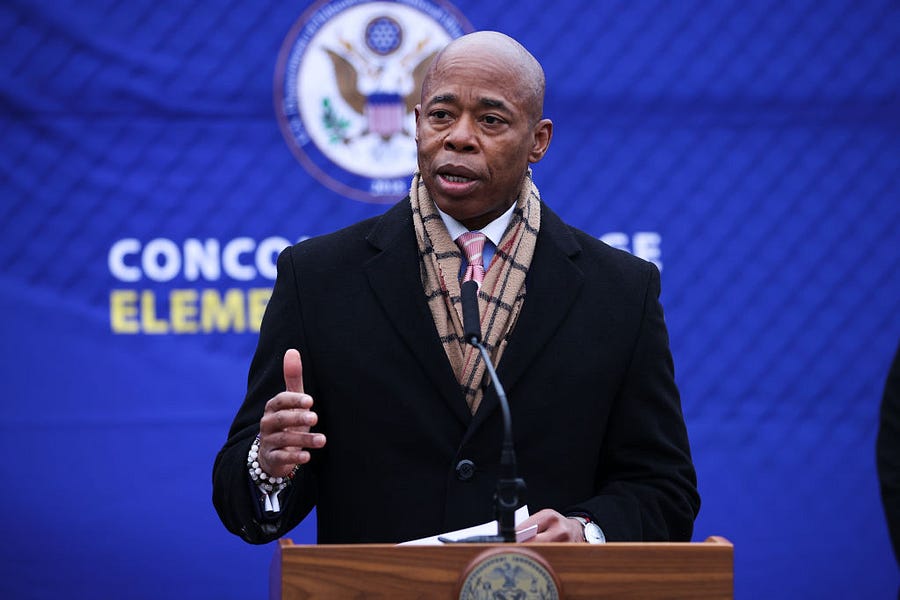

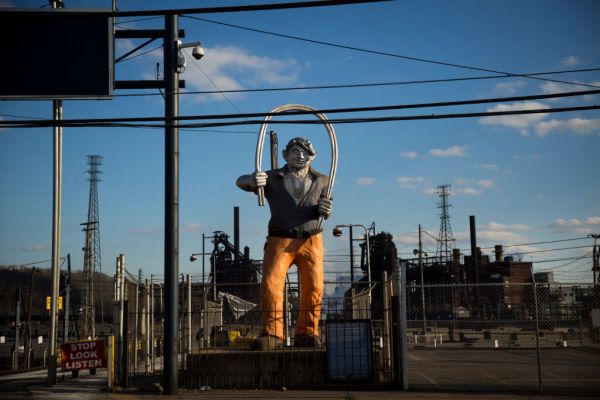
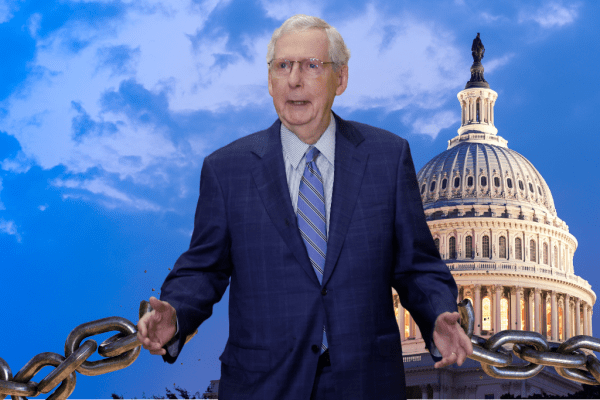

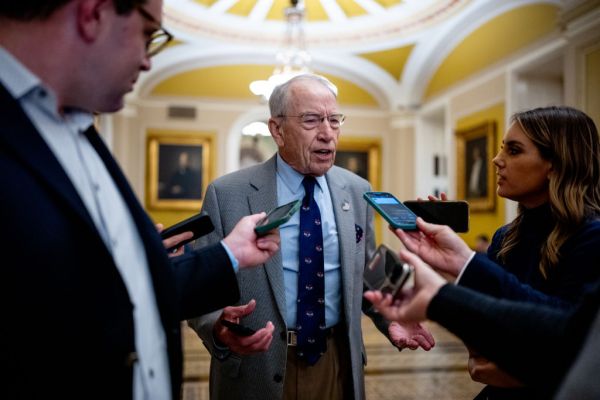
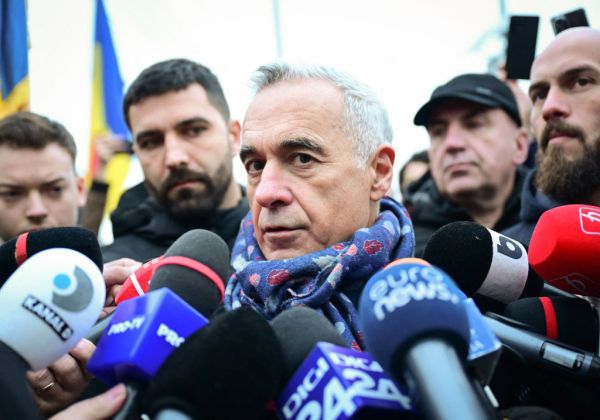

Please note that we at The Dispatch hold ourselves, our work, and our commenters to a higher standard than other places on the internet. We welcome comments that foster genuine debate or discussion—including comments critical of us or our work—but responses that include ad hominem attacks on fellow Dispatch members or are intended to stoke fear and anger may be moderated.
You are currently using a limited time guest pass and do not have access to commenting. Consider subscribing to join the conversation.
With your membership, you only have the ability to comment on The Morning Dispatch articles. Consider upgrading to join the conversation everywhere.